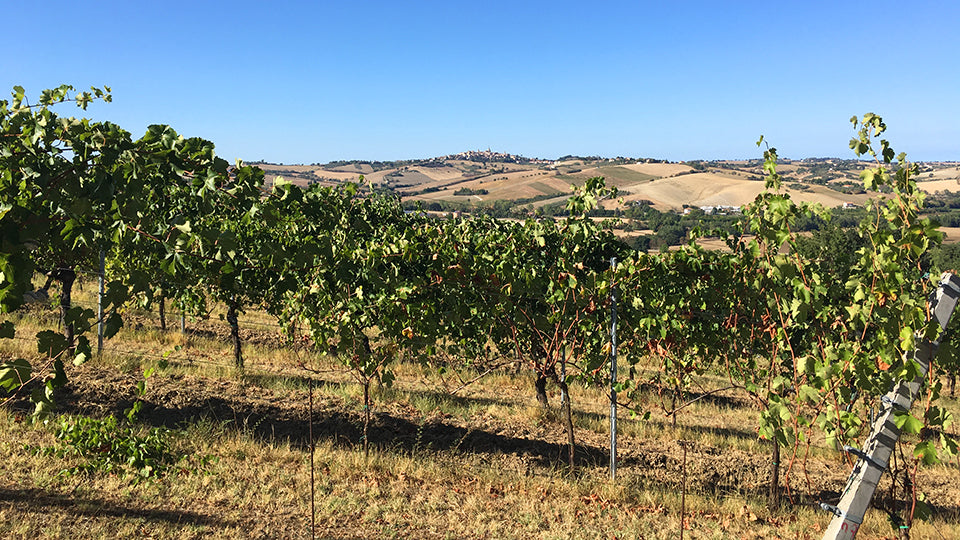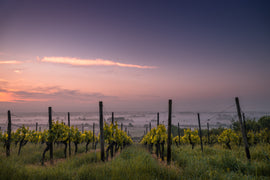Marche, or Le Marche, is a region that lies in the central east part of the Italian peninsula, with its eastern part by the Adriatic Sea; Tuscany and Umbria on the west, Emilia Romagna and the tiny Repubblica di San Marino on the north; and Abruzzo and Lazio at its southern border. The territory is mostly hilly (about 60%) and the rest of the land is mountains that form the Umbro-Marchigiano Apennines chain. Five provinces form the region: Ascoli Piceno, Fermo, Macerata, Pesaro e Urbino, with Ancona as regional capital.
Marche history has enriched the country and the world with a prominent list of artists, musicians, and scholars in many fields. Raffaello Sanzio (the full name of Renaissance painter Raphael) from Urbino and Gentile da Fabriano are from this region. Gioacchino Rossini, Pergolesi and Spontini are famous for their music. Donato Bramante was one of the major architects of the Italian Renaissance. Giacomo Leopardi, a poet and philosopher who had a fundamental impact in literature, is also from Le Marche. Maria Montessori, the educator that revolutionized the method of early childhood education. Even with this rich cultural background, Marche is still a place that receives less attention than it deserves, making this region a hidden jewel to be discovered.
Another reason to visit Le Marche is the wine! Its geographical structure, the many hills, a temperate climate, and a balanced mix of sea influence to contrast with the cool air coming from the mountains make this area well suited for the vine growth. The soil with layers of ancient seabed, chalk limestone and clay offer the perfect conditions for obtaining quality wines. From salty and mineral driven whites close to the sea to aromatic, structured reds at the higher elevations, Marche has made its mark, pardon me the involuntary pun, on the table and cellar of many wine lovers.
Elio Longobardi, Italian Wine Specialist, PlumpJack Noe Valley
Bucci Verdicchio
About the Winery: The Bucci family have been making wine at their estate since the 1700s. Ampelio Bucci is the current winemaker, upholding the Bucci reputation for high quality wines from native varietals. Ampelio honors the estate’s old vines by using traditional methods coupled with modern innovations.
Tasting Notes: With this wine, Ampelio Bucci proves that Verdicchio is so much more than a light, easy drinking wine to drink at the beach. The Bucci Verdicchio is age-worthy and complex. The wine pours a light golden hue, and drinks almost like a white Burgundy. The wine sees some time in French oak, lending the finished product a gloriously silky texture and medium weight on the palate. The wine delivers a peachy fruitiness that is balanced by zippy acidity. Each additional sip reveals a new emerging flavor, with notes of almonds along with a delicate floral quality.
Suggested Food Pairing: Perfect with fish, oysters, pork and white meats or as an aperitivo
Bucci Tenuta Pongelli Rosso
About the Winemaking: In 2002, Ampelio completed the long and arduous process of becoming certified organic. Today, he continues to tend to his vines with the same dedication. His wines undergo vinification and elevage in the underground winery, which maintains a cool temperature and removes the need for refrigeration—another example of Ampelio’s commitment to sustainability. All of the vines at the Bucci estate are extremely old, lending their wines an immense depth and concentration of flavor. To add to this concentration of flavor, Ampelio keeps his crop yield very small to obtain the greatest possible depth of flavor.
Tasting Notes: Made of a 50/50 blend of Sangiovese and Montepulciano, the wine jumps out of the glass with aromas of blackberry, plum and potting soil. The palate confirms these initial impressions, delivering juicy fruit with mouthwatering acidity and a touch of clove and baking spices. The wine is well-structured with grippy tannins.
Suggested Food Pairing: Beef and venison
Pasta e ceci al rosmarino
(Maltagliati pasta with garbanzo beans and rosemary)
This easy recipe will reward you and your guests more than you expect.
The secret of good food is trying with less to get more, in terms flavors.
Ingredients (serves 4)
- 300 g maltagliati pasta *
- 1 jar of garbanzo beans ready cooked or 500 g dry
- 4 tbsp. extra virgin olive oil or 1 slice of salt cured lardo chopped
- 1 garlic clove
- ½ yellow onion thinly sliced
- 1 sprig of rosemary
- 2 cups of chopped tomatoes
- Salt & pepper
* In Italian, the word ‘maltagliati’ literally means ‘badly cut’! In fact, these squares, rhombus or irregularly shaped flat pasta pieces started life as the remains of rolled out tagliatelle pasta dough.
You can buy this type of pasta in bulk at specialty food stores like Rainbow or The Cheese Shop.
- If using dry garbanzo beans set them in a bowl of lukewarm water overnight
- Cook the garbanzo beans in a pot with 1 liter of water, garlic clove and rosemary sprig.
- When the beans are cooked, 20-30 minutes, heat 4 tbsp. of olive oil, or the lardo, in sauce pan at medium flame
- Add the onion and let smother it
- Add the tomatoes and let cook for 10 minutes
- Now add the garbanzo beans with its own water
- When the water start to boil add the maltagliati and cook until done, 8-10 minutes
- Serve with a generous sprinkle of grated parmigiano cheese





